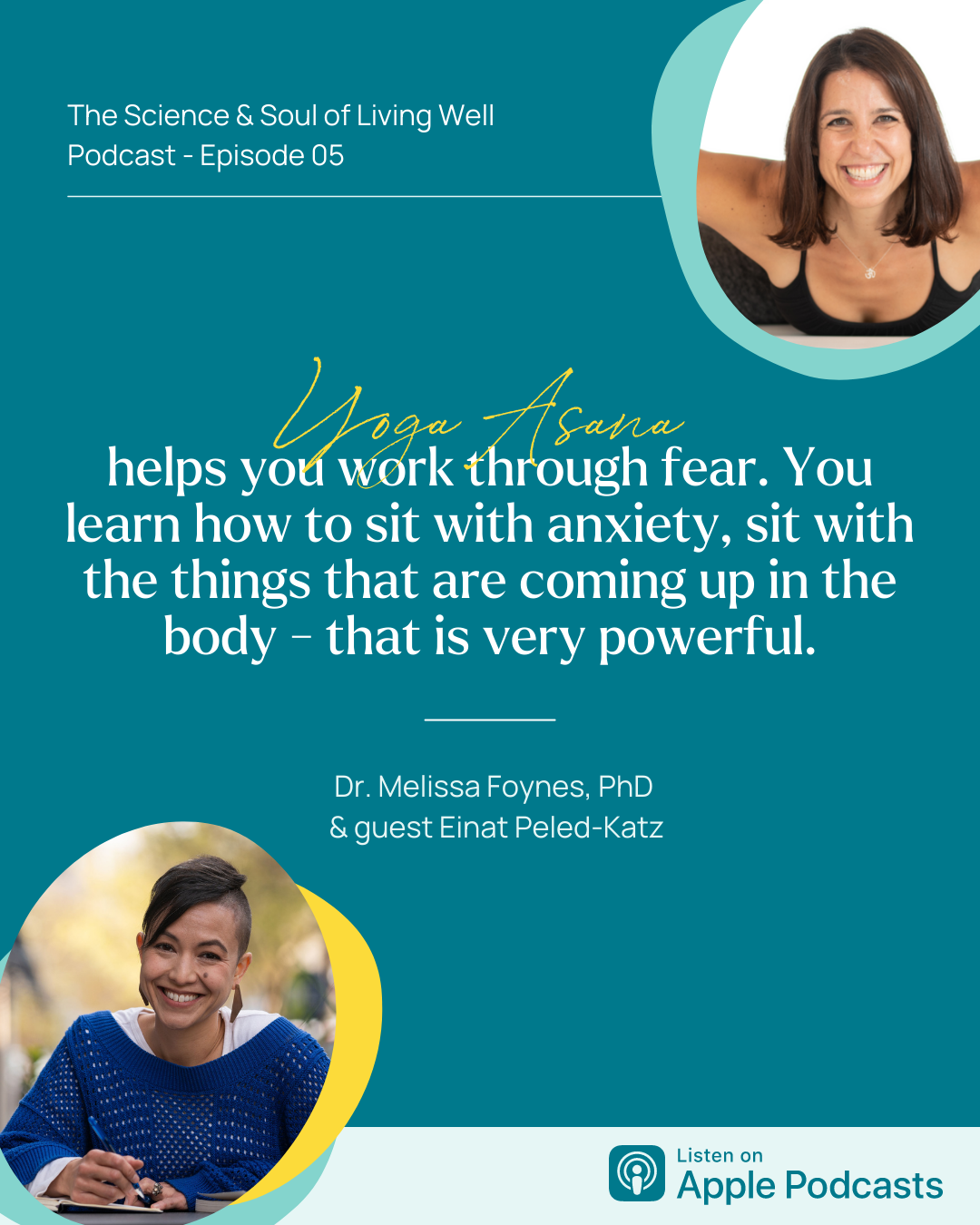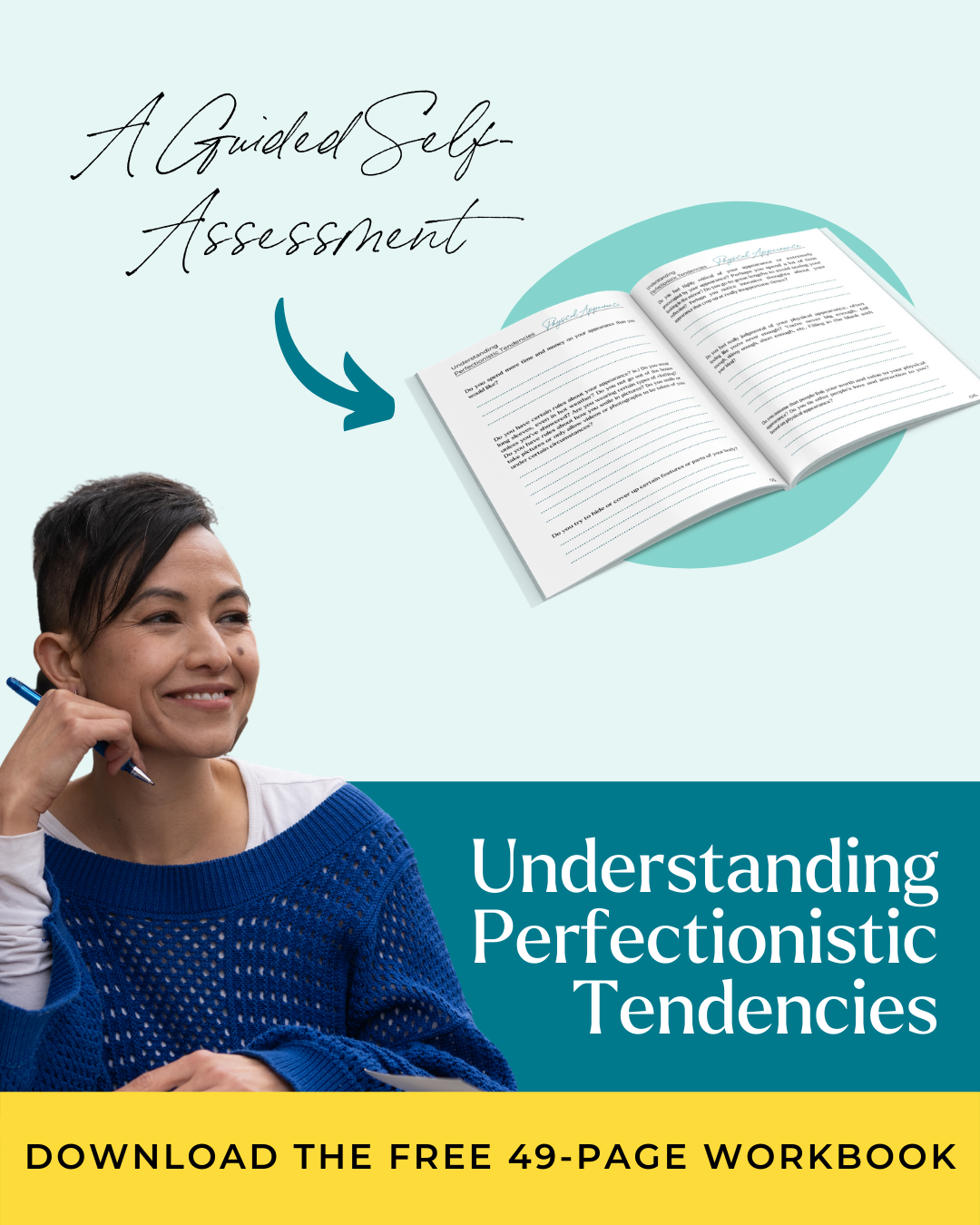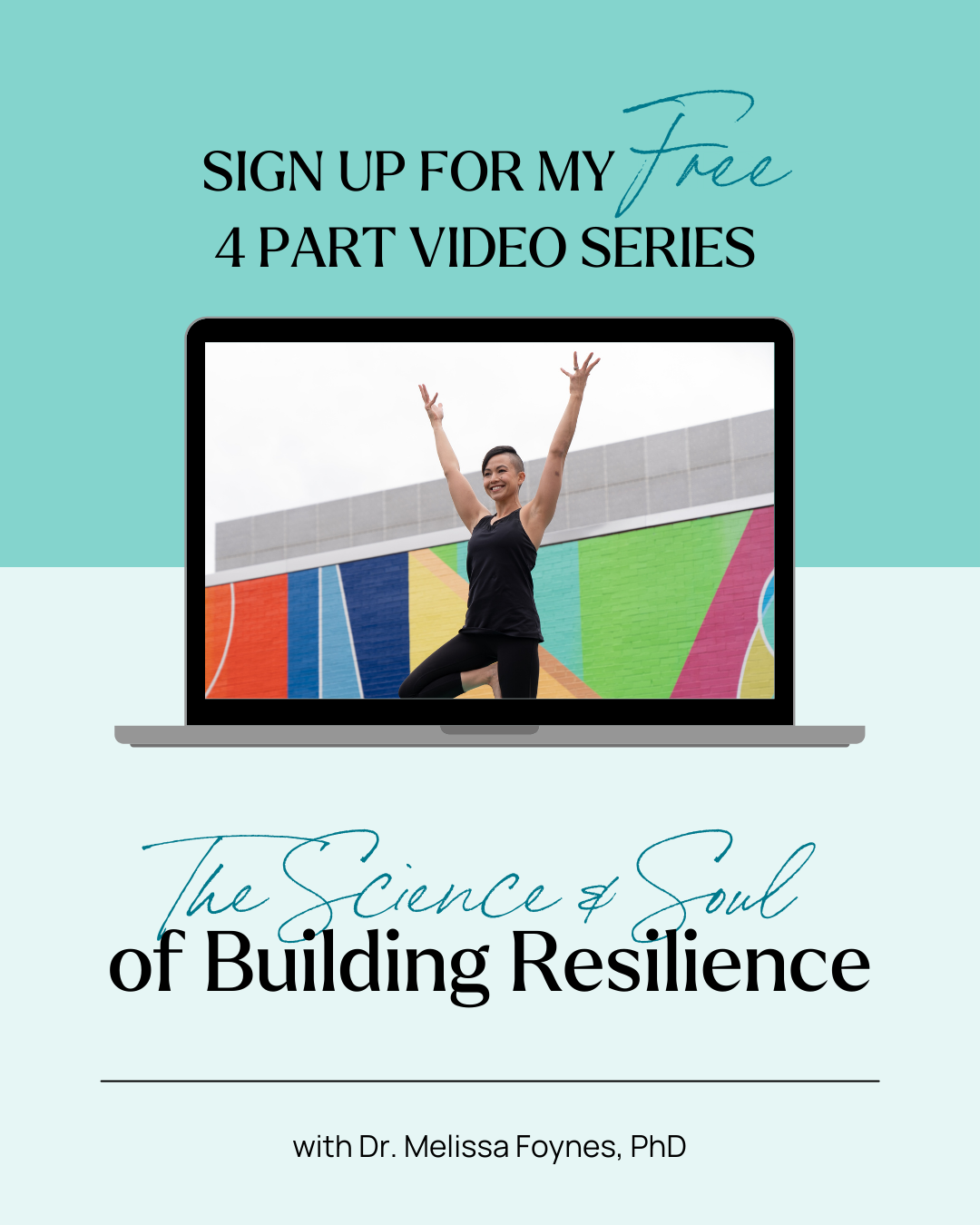welcome, I'm Melissa
Links
As a holistic coach, psychologist, mindfulness, meditation & yoga instructor, & Ayurvedic doula I offer personalized paths to growth & healing.
you may also like...
Yoga as a Mirror: Life Alignment On and Off the Mat An Interview with Einat Peled-Katz
February 18, 2021
Yoga can serve as a mirror, helping us to learn more about ourselves. The physical practice of yoga — the practice of asana — shines a light on how we show up in our lives off the mat and supports us to work through intense emotions. A yoga practice allows us to seek greater alignment with our values and nurture the most authentic versions of ourselves.
In the following excerpts from my conversation with Einat Peled-Katz, we explore how yoga helps cultivate a sense of living in alignment. A native of Israel, Einat grew up as a classically trained violinist. After her first yoga class in Boston in 2006, Einat discovered a physical activity that she actually enjoyed. As her body grew stronger and more flexible, yoga became a daily practice.
For Einat, the experience of yoga — of being embodied — provided a means of self-exploration and discovery. Yoga brought her balance, clarity and strength; it led her back to herself.
Previously, Einat suffered from stage anxiety that caused her to set aside her violin. Practicing yoga helped her transform her old fears into opportunities for growth and courage. These days she loves playing violin with her two kids and husband.
Here are some highlights from my conversation with Einat Peled-Katz
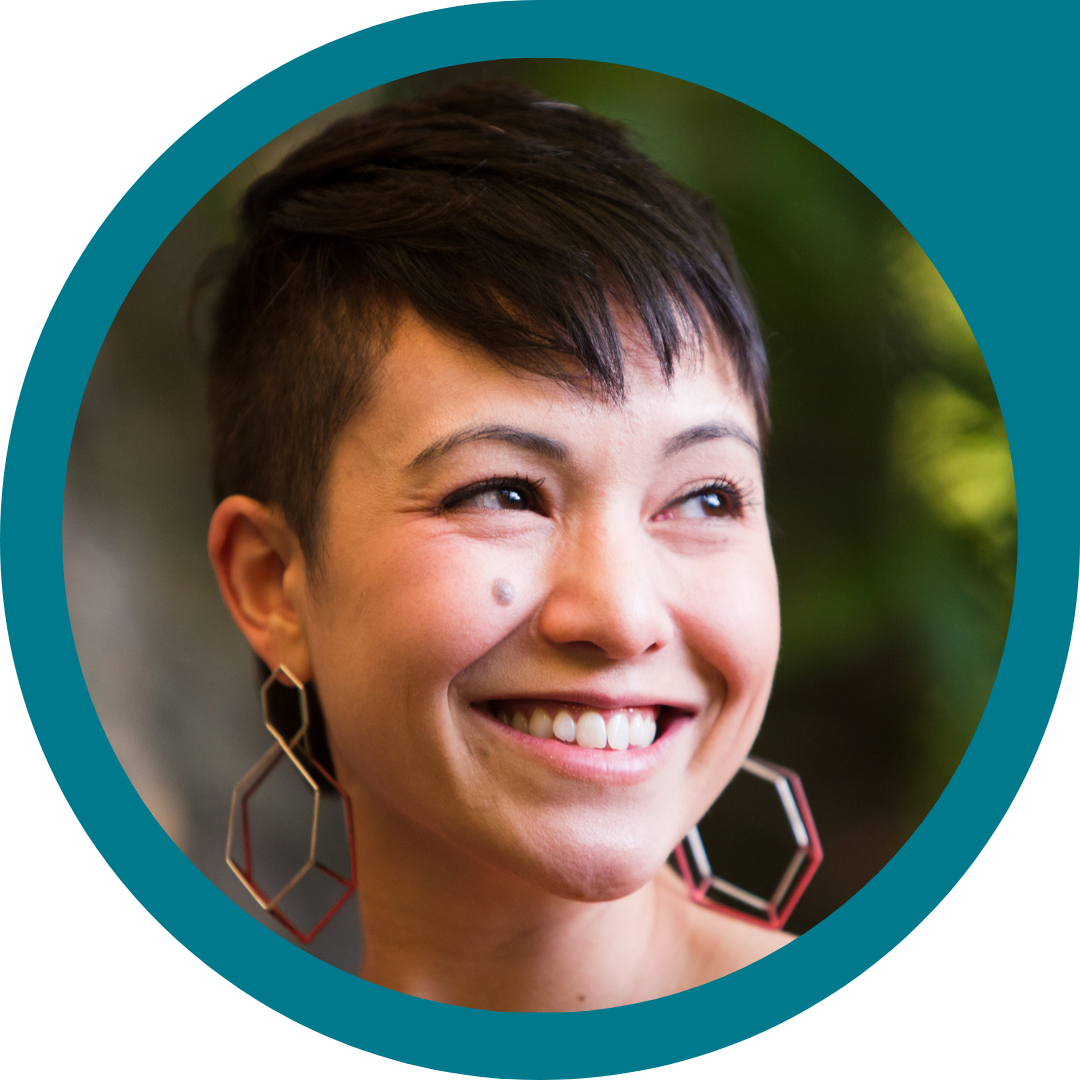 Melissa: Can you share a little bit about your personal journey to yoga? What drew you to yoga and what’s the impact that yoga has had in your life?
Melissa: Can you share a little bit about your personal journey to yoga? What drew you to yoga and what’s the impact that yoga has had in your life?
 Einat: I actually started doing yoga when I was pregnant with my first child. Then I put yoga aside and my baby was born. When I wanted to get rid of the baby fat, my friend dragged me to a power yoga class. It was terrible. I didn’t know where to put my feet and hands. My clothes were getting in the way. I remember being so disoriented. But when I came out, I was like, “Oh my god, that was awesome.” That was the first thing that drew me in — that feeling of being in my body and doing a physical activity.
Einat: I actually started doing yoga when I was pregnant with my first child. Then I put yoga aside and my baby was born. When I wanted to get rid of the baby fat, my friend dragged me to a power yoga class. It was terrible. I didn’t know where to put my feet and hands. My clothes were getting in the way. I remember being so disoriented. But when I came out, I was like, “Oh my god, that was awesome.” That was the first thing that drew me in — that feeling of being in my body and doing a physical activity.
I’ve never done any sports — in school or anywhere. All of a sudden, I started to have muscles, and I was able to do things that I never imagined I could. It was a wonderful feeling of strength. I did that for a while, and I got so excited that I decided to sign up for an assisting course — and assisting led to teacher training. And that turned into changing the course of my life completely. I never imagined that I would become a yoga teacher. That wasn’t the plan. I actually thought my dream was to be a concert violinist.
My dad was a flutist in the Israeli opera for many years. We had this really strong bond through music. My husband is also a musician, and we met in high school. My whole life revolved around music. I was going to be a violinist, but I just could not perform — so that was a problem.
The anxiety was all consuming. It’s the kind of stage fright where everything is shaking so much that you can’t put your finger in the right place. And that turns into this horrible feedback loop. When you try to perform a concert, everything is shaking, and you don’t do well. Then there is more dread the next time and the next time. I really loved music and playing the violin, but I did not like feeling so petrified. Eventually, I decided that I couldn’t do it anymore.
Years later, I realized that it wasn’t because of the fear of failure or the fear of stage fright — but the fear of fear. I think it was when I started to do yoga again that I discovered my fear is not who I am. That was a huge gift.
Yoga gives us an opportunity to face our fear
 Melissa: Can you share a little bit more about what you said about the “fear of fear”? That’s something that many of us contend with, that keeps us stuck and prevents us from taking risks. How did you work with that fear? How did you notice it showing up in your yoga practice that gave you an opportunity to face that fear?
Melissa: Can you share a little bit more about what you said about the “fear of fear”? That’s something that many of us contend with, that keeps us stuck and prevents us from taking risks. How did you work with that fear? How did you notice it showing up in your yoga practice that gave you an opportunity to face that fear?
 Einat: That’s a good question. I think we get hung up on not feeling scared because it’s not a good feeling. But I think a lot of people — if you’ve taken a yoga class — hear about having to sit with discomfort. Sitting with discomfort is what this is about, and being afraid is very uncomfortable.
Einat: That’s a good question. I think we get hung up on not feeling scared because it’s not a good feeling. But I think a lot of people — if you’ve taken a yoga class — hear about having to sit with discomfort. Sitting with discomfort is what this is about, and being afraid is very uncomfortable.
When we do things that are uncomfortable, we’re pushing the envelope. We push that little line that we drew around ourselves about who we are and what we can do. When you expand that line, all of a sudden, you breakthrough and you discover that you actually can do things that maybe you thought you weren’t able to do before. Fear is a perfectly reasonable mechanism to protect ourselves, but sometimes protecting ourselves is also boxing ourselves in.
 Melissa: I think that’s such a powerful example of how fear can convince us of who we are. There is so much power in naming and sitting with fear in terms of helping ourselves clarify our paths — and not feeling dictated or controlled by fear. It’s about having a different kind of relationship to fear.
Melissa: I think that’s such a powerful example of how fear can convince us of who we are. There is so much power in naming and sitting with fear in terms of helping ourselves clarify our paths — and not feeling dictated or controlled by fear. It’s about having a different kind of relationship to fear.
 Einat: I totally agree, and the sad thing is that it’s ongoing. It’s not like you face your fears and vanquish them. It’s a practice because things keep coming up. Something that you come up against will keep showing up in different forms. Facing it is always challenging, but it’s always so interesting. I always feel like I’m getting stronger, and I’m also getting to be more of myself. Because when you’re boxed in with your fear or hesitation, you always feel like people don’t know who you are inside.
Einat: I totally agree, and the sad thing is that it’s ongoing. It’s not like you face your fears and vanquish them. It’s a practice because things keep coming up. Something that you come up against will keep showing up in different forms. Facing it is always challenging, but it’s always so interesting. I always feel like I’m getting stronger, and I’m also getting to be more of myself. Because when you’re boxed in with your fear or hesitation, you always feel like people don’t know who you are inside.
 Melissa: They can’t see you — your true self — if it’s hidden by the fear, right? If we’re controlled by fear, we’re not engaging in life in a way that truly reflects who we are. It’s hard to feel understood and acknowledged.
Melissa: They can’t see you — your true self — if it’s hidden by the fear, right? If we’re controlled by fear, we’re not engaging in life in a way that truly reflects who we are. It’s hard to feel understood and acknowledged.
Fear and anxiety are such visceral experiences. What is so daunting about anxiety is that it can overtake your body in a way that’s unpleasant. In yoga asana — the physical practice of yoga — we have a very concrete way to work through fear.
 Einat: It’s getting in the habit of inhabiting your body, of being embodied. Learning how to sit with anxiety — or sit with the things that are coming up in the body — is really powerful. It’s also a bit interesting to think about the teachings of yoga; the teachings of yoga are telling us that we are not our body. There is the “other” — what’s on the other side —that is hard to name. We call it the Self or the soul. But it’s only when you start to be in your body that you have a glimpse of that other. Or at least for me, that was my experience.
Einat: It’s getting in the habit of inhabiting your body, of being embodied. Learning how to sit with anxiety — or sit with the things that are coming up in the body — is really powerful. It’s also a bit interesting to think about the teachings of yoga; the teachings of yoga are telling us that we are not our body. There is the “other” — what’s on the other side —that is hard to name. We call it the Self or the soul. But it’s only when you start to be in your body that you have a glimpse of that other. Or at least for me, that was my experience.
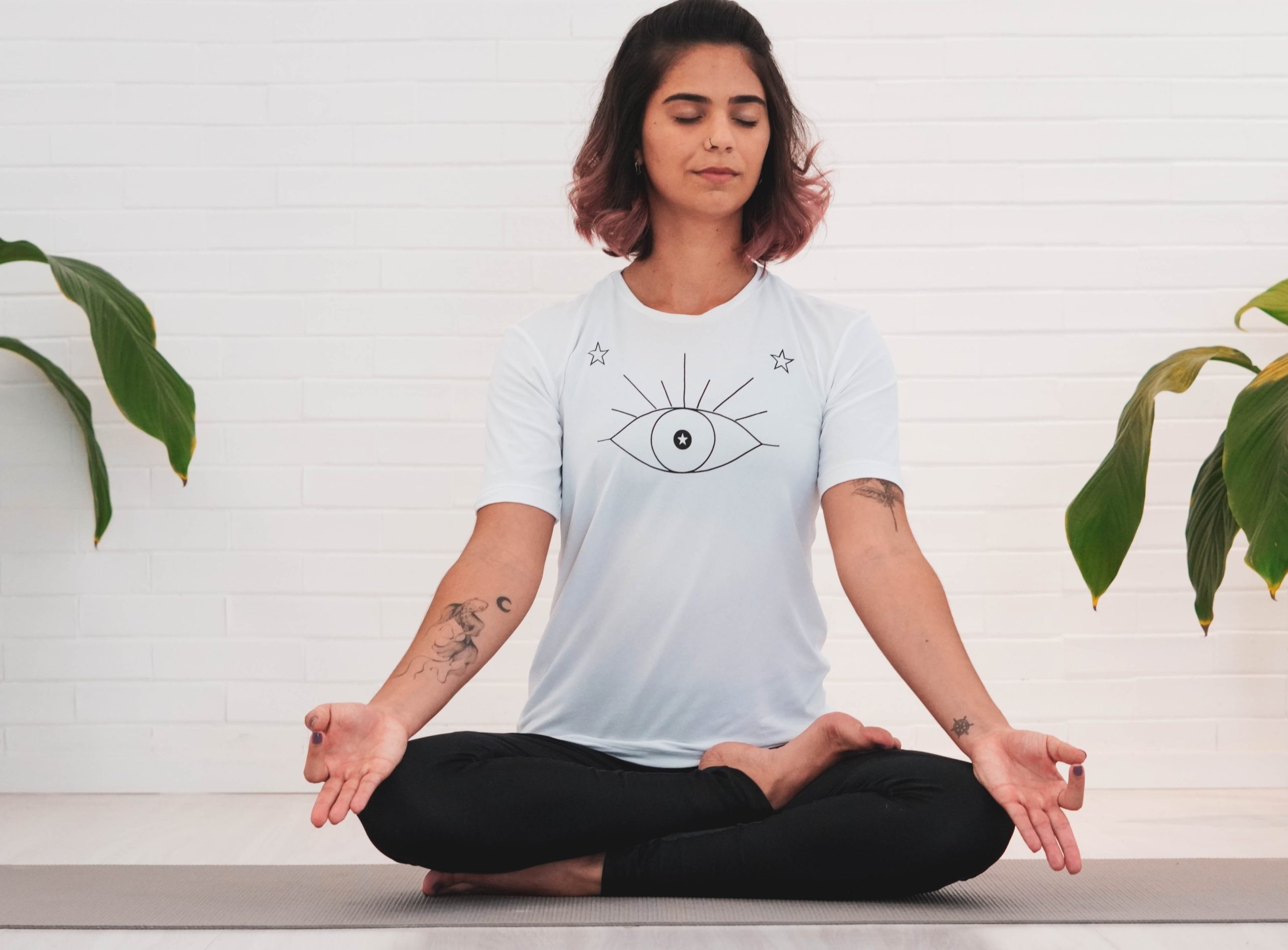
 Melissa: To access that Self, we need to start with embodiment, which allows a gateway to consciousness and awareness.
Melissa: To access that Self, we need to start with embodiment, which allows a gateway to consciousness and awareness.
 Einat: Yes. I think yoga philosophy is so wonderful. It’s very different than the western way of thinking, which believes the mind is who you are. But in eastern philosophies, the mind is just another part of the ever-changing natural world. If you wait long enough, your mind will change. And you will change. You can carve better pathways.
Einat: Yes. I think yoga philosophy is so wonderful. It’s very different than the western way of thinking, which believes the mind is who you are. But in eastern philosophies, the mind is just another part of the ever-changing natural world. If you wait long enough, your mind will change. And you will change. You can carve better pathways.
 Melissa: It’s liberating. If you practice new ways of thinking and ways of being in your body, there’s something on the other side. There’s a deeper wisdom and deeper consciousness, and I think that’s really beautiful.
Melissa: It’s liberating. If you practice new ways of thinking and ways of being in your body, there’s something on the other side. There’s a deeper wisdom and deeper consciousness, and I think that’s really beautiful.
And as we practice these new pathways, or new patterns, the old ones start to wither away because we’re not sustaining them. As you know, those samskaras — those thought patterns — show up in our physical practice. When we are embodied, when we are moving through space in our bodies, those same samskaras that affect us off the mat are showing up on the mat. There’s so much rich opportunity to notice those patterns and to practice new ways of responding to them.
 Einat: I agree, and that’s why I love it so much. Your practice is like a mirror.
Einat: I agree, and that’s why I love it so much. Your practice is like a mirror.
The path of yoga can be transformative, bringing us closer to alignment with our true selves. With that alignment often comes a sense of empowerment, resiliency and fulfillment. Learning to work with fear builds trust in ourselves, deepening and reinforcing the belief that we are capable and strong — even when things get difficult.
Next Steps:
For my complete conversation with Einat listen to the full podcast episode:
MAKE SURE TO SUBSCRIBE TO THE SCIENCE & SOUL OF LIVING WELL PODCAST.
Apple | Google | Spotify | iHeart | Audible
You can also contact me or join us on Instagram – @drfoynes.
About Einat Peled-Katz
Einat Peled-Katz has been teaching yoga in the Boston area since 2011. She leads a variety of online classes, workshops, assistant trainings and teacher trainings. As an eternal, dedicated student, Einat is inspired by different styles of yoga and enjoys combining them in her classes. Connect more with Einat on Instagram or visit her website.
RELATED RESOURCES:
3 Ayurveda Practices for Balance and Alignment
Burnout, Body image and True Purpose
BEFORE YOU GO…
DOWNLOAD THE FREE 49 PAGE WORKBOOK
LEARN MORE ABOUT MY COACHING PRACTICE THROUGH THIS FREE VIDEO SERIES:
The Science & Soul of Building Resilience
In this 4-part series you’ll learn:
- Body awareness to help us center ourselves and live in a present-focused and embodied way even in the midst of stress
- Decreasing our stress response so we can access intuition and connect to our needs
- Values clarification to guide decisions about prioritizing our time, attention and energy
- Self-compassion to soften our harsh inner critics and facilitate growth following mistakes
Freebie Alert!
Freebie Alert!
Newsletter
Sign up to get a dose of love, inspiration, wisdom &
all the latest news on events straight to your inbox.
privacy
terms
made with ❤ by habitat society
Explore
©2022, Melissa foynes
Thank you
You're subscribed to my newsletter. Please whitelist my email to make sure you don't missing anything I send you.
